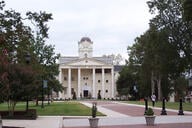You have /5 articles left.
Sign up for a free account or log in.
Investment returns from a group of select, well-endowed public and private colleges suggest the 2014 budget year was a good year for college endowment funds.
Many endowment managers will see double-digit investment returns for the second year in a row, just two years after market returns shrank slightly and six years after the economic crisis torpedoed some funds.
A few colleges – Duke University, Yale University and the University of Minnesota – are reporting investment returns of 20 percent or more in the 2014 budget, which for most colleges ran from summer 2013 to summer 2014. The money, from a pool of funds set aside to aid colleges’ missions in perpetuity, is used to fund annual operating expenses, provide scholarships and help cover one-time costs.
Harvard University, which has the world’s largest college endowment fund, reported a 15.4 percent return, bringing the value of its endowment to about $36.4 billion. That’s “tantalizingly close to its peak value of $36.9 billion, reported in June 2008, just before the financial crisis,” observed Harvard Magazine, an alumni publication.
To market watchers, these ample returns are no surprise: The Standard & Poor’s 500 stock market index grew by over 20 percent during the budget year.
Another measure of market performance that takes into account more than just stock prices, the Wilshire Trust Universe Comparison Service, suggests institutional investors, like colleges, should expect an average of 15.7 percent for last year.
Many colleges have rebounded since the recession and have endowments larger now than they did before.
“My sense is that most institutions have now returned to where they were, maybe even a little above,” said Ken Redd, director of research and policy analysis at the National Association of College and University Business Officers, or NACUBO.
The association is expected to release the preliminary results of its survey of college endowment funds in November. Right now, endowment returns are being trumpeted by the wealthier institutions and those with exceptionally good returns. The University of Minnesota, for instance, saw endowment returns of 20.4 percent. That was far above the 15.5 percent benchmark the university set for itself, according to a recent report by two finance officials at the university. The university’s consolidated endowment fund is now worth nearly $1.3 billion.
Also in the 20-plus-percent return club: Duke reported 20.1 percent returns for its endowment, now worth $7 billion. Yale saw 20.2 percent returns on its endowment, now worth $23.9 billion.
“Endowments obviously tend to do about as well as the overall financial markets,” Redd said.
Last year, average endowment returns were nearly 12 percent, according to NACUBO. Just two years ago, during the 2012 budget cycle, college endowment investments actually lost, on average, 0.3 percent.
Still, a few good years can quickly be offset by bad ones, and inflation – about 3 percent for colleges last year, according to a new estimates – marches ever on. The real measure for a college endowment is a long-term one. Experts say average returns over the long term need to be 7 percent or greater just so colleges can keep their heads above water. Colleges also are generally required by law to spend about 5 percent of their endowment funds each year.
“We’re still basically just treading water – that’s my suspicion," Redd said.
While many colleges have not yet made public their returns, among those that have, Bowdoin College, Dartmouth University and the Massachusetts Institute of Technology each reported a 19.2 percent return; the University of California had an 18.7 percent return; the University of Pennsylvania, which now has $9.6 billion endowment, saw a 17.5 percent market return; and Boston University announced a 16.7 percent return.




